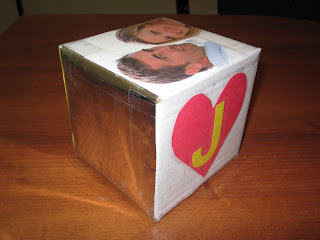Looking for a great book for baby?




Characteristics of Great Books for Babies
• Thick sturdy cover and pages
• Small size, for little hands
• Bright colourful pictures (high contrast)• Simple geometric shapes
•
Clear pictures• Pictures of human faces
• Few words
• Nursery rhymes
The book shown above models the Tana Hoban book
White on Black.



Using a die cutter, I cut out several objects, using white construction paper, that begin with the letter B or the sound "buh". This is one of the first sounds that emerge in children. Then, I glued the objects onto black construction paper that was cut into the shape of a house. Then, I laminated the book, punched holes into the left-hand side, and used rings from Staples to bind it together.
Does it have to be black and white?It is true that objects with patterns having 100% contrast (that is, black-on-white) are the easiest for newborns and young infants to see. However, it is now known that they can distinguish much subtler shades of gray. For example, in the first month babies can distinguish two shades of gray that differ by only 5% in gray level (5% contrast). As good as that is, by 9 weeks of age, infants' contrast sensitivity becomes 10 times better, so that they can see large patterns or objects that have less than 0.5% contrast. This is nearly as good as adult contrast sensitivity (0.2%). This means is that by about 2 months of age your baby is capable of perceiving almost all of the subtle shadings that make our visual world so rich, textured and interesting: shadings in clouds, shadows that are unique to your face; even see a white teddy bear on a white couch!
Source: The Smith-Kettlewell Eye Research Institute
http://www.ski.org/Vision/babyvision.html#are_black



















